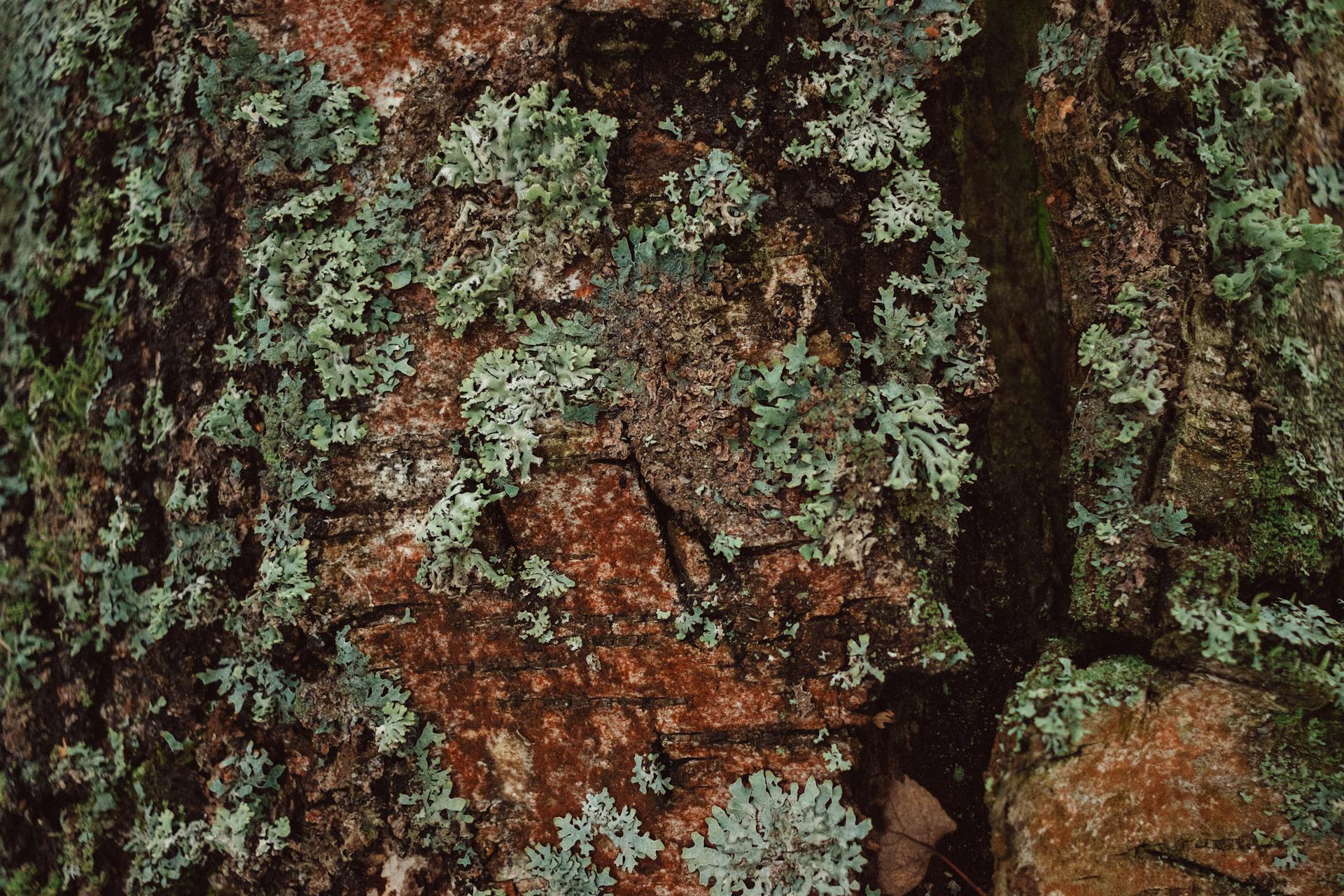
Miscanthus is a very versatile plant, and can be grown from seed, division, or rhizomes. All three methods are relatively easy, and each has its own benefits.
Growing from seed is the most common method, and is also the easiest. You can start miscanthus seeds indoors or outdoors, although starting them indoors will give them a head start on the growing season. Start the seeds about 6-8 weeks before the last frost date in your area. Sow the seeds on the surface of a well-drained potting mix, and water them lightly. Keep the soil moist but not soggy, and fertilize monthly with a half-strength balanced fertilizer. The seeds should germinate within 2-3 weeks.
Once the seedlings are large enough to handle, transplant them into individual pots. You can either plant them outdoors in their permanent location, or keep them growing in pots for a year or two until they reach their full size. If you live in an area with very hot summers, it’s best to plant miscanthus in the fall so it can become established before the heat arrives.
Division is the best way to propagate miscanthus if you already have an established plant. The best time to divide miscanthus is in the spring, just as new growth begins to appear. Dig up the entire plant, and using a sharp knife, divide it into several sections, making sure that each section has at least one good-sized root ball. Plant the divisions in their permanent location, and water them well.
You can also propagate miscanthus from rhizomes. Rhizomes are thick, fleshy roots that store food and water for the plant. They’re very easy to grow, and will produce a clone of the parent plant. To propagate from rhizomes, simply cut off a section of the rhizome (about 6 inches is a good size), and plant it in a well-drained potting mix. Water it well, and keep the soil moist but not soggy. The rhizome will soon sprout new growth, and can be transplanted into its permanent location when it’s large enough to handle.
If this caught your attention, see: What Can Grow but Is Not Alive?
How do you start miscanthus from seed?
If you're looking to start miscanthus from seed, the process is actually quite simple. All you need is a bit of patience and the right conditions. Here's a step-by-step guide to ensure success:
1. Collect or purchase miscanthus seeds. They can be difficult to find, but luckily they're available online from a variety of sources.
2. Fill a planting tray or pot with moistened potting mix, and then sprinkle the seeds on top.
3. Cover the seeds with a thin layer of potting mix or sand, and then gently water.
4. Place the tray or pot in a warm, bright location out of direct sunlight.
5. Keep the potting mix moist, but not soggy, and within a few weeks the seeds should germinate.
6. Once the seedlings have sprouted, thin them out so that only the strongest are left.
7. Transplant the seedlings into larger pots or their permanent outdoor home once they've reached 4-6 inches in height.
8. Be sure to harden off your miscanthus seedlings before planting them outdoors, and then water regularly until they're established.
With a little bit of care, you'll soon have a flourishing miscanthus plant of your own!
Suggestion: Buy Miscanthus Giganteus
How long does it take for miscanthus to germinate?
It can take up to three weeks formiscanthus to germinate. The time it takes depends on the climate,soil type, and seed type. In colder climates, it can take up to a weeklonger. In hotter climates, it can take up to two weeks.
Soil type also plays a role in howlong it takes for miscanthus to germinate. If the soil is too dense, itcan take longer for the roots to break through. If the soil is too sandy,it can take less time.
The type of seed also influences thegermination time. Some miscanthus seeds are easier to germinate thanothers. If you are using a type of seed that is known to be difficultto germinate, it can take up to three weeks for it to sprout.
If you are growing miscanthus in acontainer, it can take a bit longer for the plant to emerge. The size ofthe container also plays a role in how long it takes for the plant togerminate. A small container can dry out quickly, which can cause theseed to die. A larger container can hold more moisture, which can helpthe seed to germinate.
It is important to keep the soilmoist during the germination process. If the soil dries out, it cancause the seed to die. If you are using a container, be sure to checkthe moisture level regularly.
Once the miscanthus seed germinates,it will grow quickly. Within a few weeks, you will see new leavesemerging from the soil.
You might like: Plant Plumeria Seeds
What is the best time of year to sow miscanthus seed?
There is no definitive answer to this question as it depends on several factors, including your geographical location and what type of miscanthus you are growing. However, as a general guide, the best time to sow miscanthus seed is in late spring or early summer.
Miscanthus is a hardy grass that is native to Asia. It is a fast-growing grass that can reach heights of up to 3 metres (10 feet). Miscanthus is a popular choice for biofuel production as it is a high-yielding crop that can be grown on marginal land.
Miscanthus can be sown from seed or propagated from division. division is the most common method of propagation as it is quicker and results in a more uniform plant. However, if you are starting from seed, then you will need to sow the seeds in late spring or early summer.
The best time to sow miscanthus seed will depend on your geographical location. In the UK, for example, the ideal time to sow seed is between late May and early June. This will give the seeds enough time to germinate and the plants will be ready to harvest by the end of the summer.
If you are growing miscanthus for biofuel production, then it is important to choose a high-yielding variety. Miscanthus x giganteus is a popular choice as it can produce up to 15 tonnes of biomass per hectare.
When sowing miscanthus seed, it is important to use a well-drained seedbed. The soil should be firm but not compacted. If the soil is too compacted, then the seeds will not be able to germinate.
It is also important to ensure that the seedbed is weed-free. Miscanthus has a slow initial growth rate and can be outcompeted by weeds. To avoid this, it is best to use a herbicide before sowing the seeds.
After sowing, the seeds should be covered with a thin layer of soil. They should then be watered regularly, making sure that the soil does not dry out.
The seedlings will start to appear after around 2-3 weeks. Once they have emerged, they should be thinned out to achieve a spacing of around 50cm between plants.
Miscanthus is a hardy plant that tolerates drought and poor soil conditions.
Explore further: Why Is My Garden Not Growing?
What is the optimum temperature for miscanthus seed germination?
Miscanthus is a grass that is commonly used in biofuel production. The optimum temperature for miscanthus seed germination is between 20-30°C. Germination is impaired at lower temperatures, and there is a decreased rate of germination at higher temperatures. The optimum temperature range for miscanthus seed germination is therefore quite narrow.
There are several reasons why the optimum temperature for miscanthus seed germination is relatively low. One reason is that miscanthus is a tropical grass, and tropical grasses tend to have lower optimum temperatures for germination than temperate grasses. Another reason is that miscanthus seeds have a very hard seed coat. This hard seed coat helps to protect the seed from insect pests and diseases, but it also makes it difficult for water and oxygen to penetrate the seed coat and reach the embryo inside. The lower the temperature, the slower the rate of water and oxygen penetration, and the longer it takes for the embryo to begin sprouting.
The optimum temperature for miscanthus seed germination is therefore an important factor to consider when growing this grass for biofuel production. If the temperature is too low, germination will be delayed and the plants will mature more slowly. If the temperature is too high, germination may be adversely affected and the plants may not perform as well as they would at the optimum temperature. For this reason, it is important to choose a location for miscanthus cultivation that has a climate that is conducive to the optimum temperature range for germination.
Explore further: Hemp Seeds Low Fodmap
What is the best way to sow miscanthus seed?
Miscanthus is a rhizomatous, clump-forming grass that is native to Asia. It has been introduced to North America, Europe, and Australia as an ornamental plant and for erosion control. Miscanthus is a fast-growing grass that can reach heights of 6-12 feet (2-4 m) in a single growing season. The leaves are green and lance-shaped, with a sharp tip. The flowers are borne in dense, branched panicles that turn bronze in the fall. The seed heads of miscanthus are often used in dried arrangements.
Miscanthus is easily propagated from seed. The best time to sow miscanthus seed is in the spring, after the last frost date. The seed should be sown in well-drained soil in full sun. Miscanthus seeds need light to germinate, so do not plant them too deeply. Just press the seed into the soil surface. After planting, keep the soil moist until the seeds germinate. Once the miscanthus seedlings have emerged, thin them to 18-24 inches (45-60 cm) apart.
Miscanthus is a hardy grass that does not require much care. It is drought-tolerant and tolerates a wide range of soil conditions. However, miscanthus will perform best in fertile, well-drained soils. Fertilize miscanthus in the spring with a balanced fertilizer. Apply the fertilizer according to the package directions. Once established, miscanthus requires little supplemental watering. However, during prolonged periods of drought, supplemental irrigation may be necessary to keep the plants from going dormant.
Miscanthus is generally a pest- and disease-free grass. However, it can be susceptible to crown rot in poorly drained soils. If you live in an area with prolonged periods of wet weather, it is best to grow miscanthus in a raised bed or on a slope to improve drainage.
Suggestion: Grass Seeds
How deep should you sow miscanthus seed?
Miscanthus is a warm-season grass that is often used for ornamental purposes or for creating a naturalistic look in the landscape. The most common way to propagate miscanthus is by division of the root ball or by cuttings. However, it can also be grown from seed. When growing miscanthus from seed, it is important to sow the seed at the correct depth.
If the seed is sown too shallow, it will dry out and will not germinate. If the seed is sown too deep, it may not receive enough light and will also not germinate. The ideal depth for sowing miscanthus seed is 1/4 to 1/2 inch deep.
To ensure proper germination, it is also important to sow the seed in well-draining soil that is high in organic matter. The soil should be kept moist, but not wet, until the seedlings emerge. Once the seedlings are up and growing, they will be quite tolerant of drought conditions.
How far apart should you sow miscanthus seed?
Miscanthus, also known as Chinese sugarcane or eulalia grass, is a perennial grass that is popular in landscaping and Tuina. It is a fast-growing grass that can reach up to 6 feet in height. The variegated leaves are what give this grass its ornamental value. The different colors of the leaves include green, yellow, white, and even pink. The leaves are long and narrow, and the blades can be up to 18 inches long. The flowers appear in early summer, and they are small and numerous, growing in clusters. The flowerheads are light brown, and they turn into silky, white seeds that are dispersed by the wind.
So how far apart should you sow miscanthus seed? The short answer is about 12 to 18 inches apart. But let's take a closer look at the reasons for this spacing.
Miscanthus is a fast-growing grass, which means that it will quickly fill in any gaps in the landscape. If the seeds are sown too close together, they will compete for resources and the grass will thin out. Sowing the seeds too far apart will result in too much space between the plants, and the grass will not form a dense ground cover. The ideal spacing for miscanthus is 12 to 18 inches apart. This will allow the plants to fill in the landscape quickly, and it will also allow for proper air circulation and light penetration to the lower leaves.
It is important to note that miscanthus is a very adaptable plant. It can tolerate a wide range of soils and climates. It is also relatively drought-tolerant once it is established. However, for best results, it is still recommended to sow the seeds in well-drained soil that is amended with organic matter. It is also important to provide adequate moisture to the plants during the establishment period. Once the plants are established, they will be more drought-tolerant.
Miscanthus is a versatile plant that can be used in a variety of landscape settings. It is commonly used as an accent plant, due to its showy leaves. It can also be used as a ground cover, due to its rapid growth rate. It can even be used as a screening plant, due to its height. No matter how you use it in your landscape, proper spacing is essential for best results. So when it comes to miscanthus, the
Intriguing read: Grow Light
What soil type is best for miscanthus?
Miscanthus, also known as Chinese silver grass, is a perennial grass that is native to southern and eastern Asia. It is a hardy plant that can grow in a wide range of soil types, but it prefers well-drained, sandy soils. Miscanthus is a fast-growing grass that can reach heights of up to 15 feet. It has a slender, upright stem and leaves that are up to three feet long. The leaves are green in the summer and turn golden-yellow in the fall. The flowers are small and inconspicuous, but they produce large quantities of seeds that are dispersed by the wind.
Miscanthus is a drought-tolerant plant that can tolerate poor soils andnutrient deficiencies. However, it prefers soils that are high in organic matter. Miscanthus is a versatile plant that can be used for a variety of purposes, including erosion control, biofuel production, and ornamental plantings. It is a hardy plant that is resistant to most pests and diseases.
Miscanthus is a fast-growing grass that can reach heights of up to 15 feet. It has a slender, upright stem and leaves that are up to three feet long. The leaves are green in the summer and turn golden-yellow in the fall. The flowers are small and inconspicuous, but they produce large quantities of seeds that are dispersed by the wind.
Miscanthus is a versatile plant that can be used for a variety of purposes, including erosion control, biofuel production, and ornamental plantings. It is a hardy plant that is resistant to most pests and diseases.
Discover more: How Long Do Potatoes Take to Grow?
What is the ideal pH for miscanthus?
The ideal pH for miscanthus is between 6.0 and 7.0. This range is optimal for the plant's growth and development, and allows it to take up nutrients efficiently. Soil with a pH outside of this range can be amended to bring it into the ideal range.
Frequently Asked Questions
Is Miscanthus maiden grass Hardy?
Yes, Miscanthus maiden grass will be hardy in zones 5 to 9.
How long does it take maiden grass to grow?
Maiden grass will take anywhere from 6 to 12 months to grow.
How big does Miscanthus grass get?
Some varieties can grow to be up to 8 feet tall, while others are typically 3 to 4 feet tall.
How long does it take Miscanthus seeds to germinate?
It usually takes from 1 to four weeks at these temperature but can take up to nine weeks once temperatures fall below 16°C (60°F).
Can you split Miscanthus sinensis?
Yes, Miscanthus sinensis can be easily split by hand or with a spaded fork.
Sources
- https://www.terravesta.com/blog/growing-miscanthus-from-seed/
- https://www.gardenersworld.com/how-to/grow-plants/how-to-grow-miscanthus/
- http://ing.scottexteriors.com/how-do-you-grow-miscanthus-from-seed/
- https://www.thespruce.com/miscanthus-silver-grass-guide-5215368
- https://www.gardenershq.com/Miscanthus.php
- https://www.gardeningknowhow.com/ornamental/foliage/maiden-grass/growing-maiden-grass.htm
- https://www.seedaholic.com/miscanthus-sinensis.html
- https://www.houzz.com/discussions/1919731/starting-miscanthus-grass-from-seed
- https://homeguides.sfgate.com/miscanthus-seed-65765.html
- https://www.reddit.com/r/outdoorgrowing/comments/wc1z4v/do_you_usually_get_seeds_with_outdoor_growing/
- https://www.terravesta.com/news/miscanthus-grown-from-seed-possible-by-2019/
- https://www.rhs.org.uk/plants/miscanthus
- https://homeguides.sfgate.com/fast-miscanthus-grow-84070.html
- https://www.agrikinetics.com/miscanthus-giganteus/planting-miscanthus/
- https://crops.extension.iastate.edu/cropnews/2012/04/it-too-late-dig-miscanthus-spring-planting
- https://homeguides.sfgate.com/grow-miscanthus-38139.html
- https://www.sturdybarn.com/how-much-does-miscanthus-cost/
- https://bigboyplants.com/morning-light-maiden-grass-miscanthus-sinensis-care/
- https://www.youtube.com/watch
- https://www.thompson-morgan.com/your-seed-sowing-calendar
- https://www.deeranddeerhunting.com/content/articles/magical-giant-miscanthus-planting-growing-and-maintaining
- https://www.gardenersworld.com/plants/your-seed-sowing-year/
- https://www.lovethegarden.com/uk-en/article/best-time-sow-grass-seed
- https://sowrightseeds.com/2020/01/24/what-is-the-optium-temperature-for-seed-germination/
- https://www.researchgate.net/publication/279913140_Alternating_Temperatures_Promote_Seed_Germination_of_Miscanthus_sinensis
- https://acsess.onlinelibrary.wiley.com/doi/abs/10.2135/cropsci2013.03.0187
- https://www.deepdyve.com/lp/wiley/thermal-requirements-for-seed-germination-in-miscanthus-compared-with-9UBdbNUmEu
- https://pubmed.ncbi.nlm.nih.gov/3077854/
- https://www.quora.com/How-do-you-find-the-optimum-temperature-of-seed-germination
- https://www.thespruce.com/maiden-grass-miscanthus-sinensis-gracillimus-2132484
- https://www.wikihow.com/Sow-Tiny-Seeds-Evenly
- https://www.wikihow.com/Sow-Grass-Seed
- https://justagric.com/how-to-plant-giant-miscanthus/
- https://www.researchgate.net/publication/241102119_Establishing_Miscanthus_sinensis_from_seed_using_commercial_sowing_methods
- https://thegardenbarnhouse.com/tag/miscanthus-planting-distances/
- https://parkseed.com/success-with-seeds-miscanthus/a/growing-miscanthus-information/
- https://www.terravesta.com/news/increase-miscanthus-yields-with-soil-preperation/
- https://www.miscanthus.co.nz/the-plant/miscanthus-the-plant-that-tolerates-poor-soils/
- https://content.ces.ncsu.edu/miscanthus-an-environmental-choice-for-marginal-lands
- https://www.bhg.com/gardening/plant-dictionary/perennial/miscanthus/
- https://www.agri-tech-e.co.uk/elephant-grass-a-biofuel-that-improves-soil/
- https://bioresources.cnr.ncsu.edu/resources/miscanthus-beyond-its-use-as-an-energy-crop/
- https://www.wilsonbrosgardens.com/caring-for-miscanthus-grasses.html
- https://www.miscanthus.co.nz/environmental-considerations/
- https://extension.psu.edu/miscanthus-budget-for-biomass-production
- https://www.teagasc.ie/media/website/rural-economy/rural-development/diversification/Energy-18-Miscanthus-Energy-Crop.pdf
- https://extension.umd.edu/sites/extension.umd.edu/files/2021-04/Miscanthus%20Recommendations.pdf
- https://farm-energy.extension.org/miscanthus-miscanthus-x-giganteus-for-biofuel-production/
- https://www.teagasc.ie/media/website/publications/2011/Miscanthus_Best_Practice_Guidelines.pdf
- https://www.royalqueenseeds.com/blog-the-perfect-ph-value-for-a-cannabis-plant-n87
Featured Images: pexels.com


